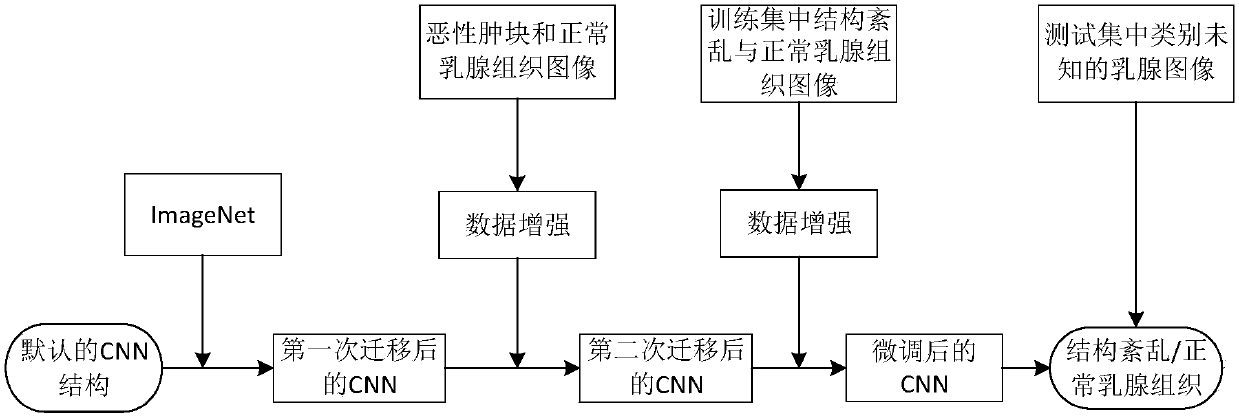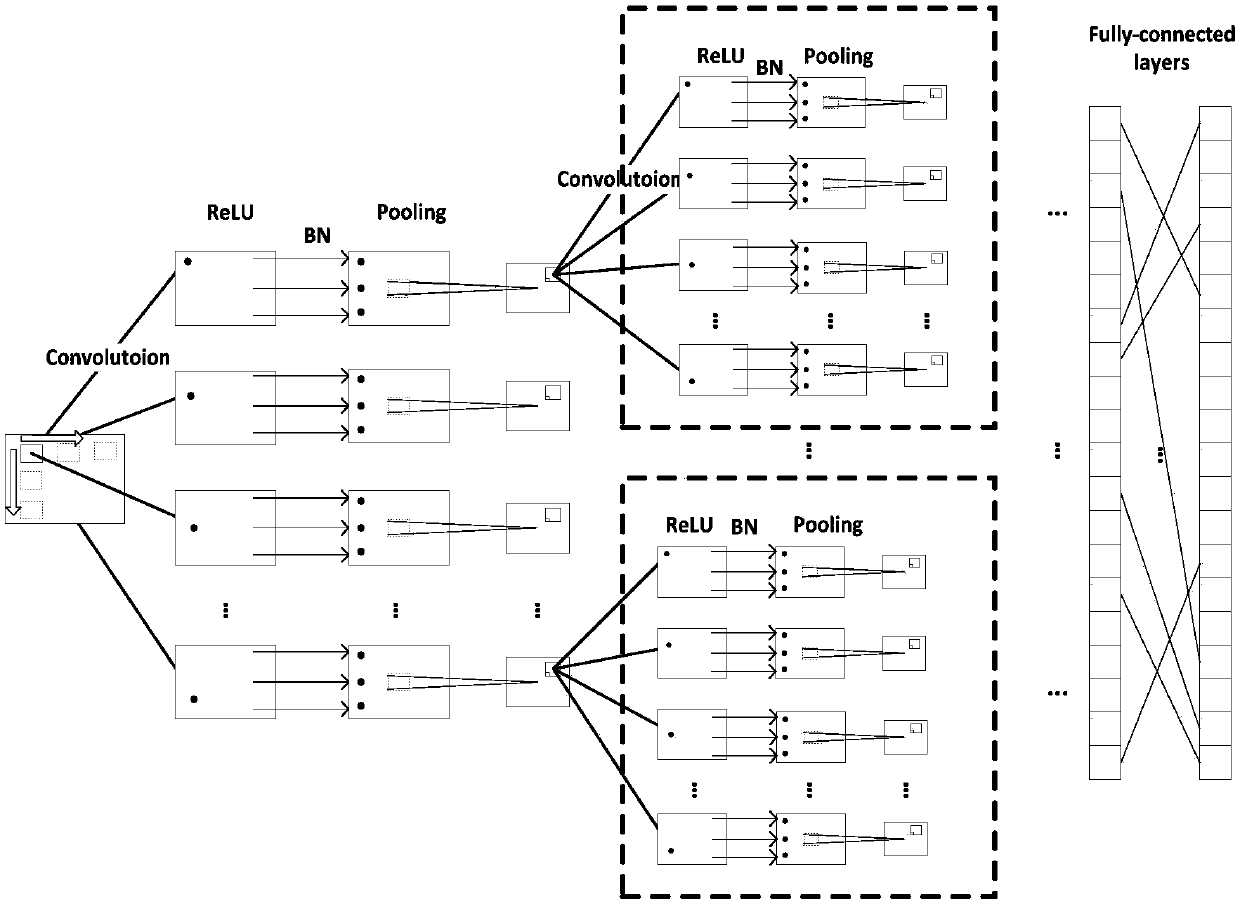Breast structure disorder identification method based on two transfer and convolutional neural network
A neural network recognition and neural network technology, applied in the field of structural disorder recognition based on deep learning, can solve problems such as difficulties, achieve good classification effect and performance, and avoid limitations and subjectivity.
- Summary
- Abstract
- Description
- Claims
- Application Information
AI Technical Summary
Problems solved by technology
Method used
Image
Examples
Embodiment Construction
[0027] The present invention is a kind of method based on twice migration convolutional neural network to identify the pathological disorder of mammary gland structure, combined below figure 1 Describe its specific implementation process.
[0028] Step 1. Data Augmentation
[0029] The data enhancement technology mainly used in the present invention is a geometric transformation method, which mainly includes translation (translate the image in a certain way on the image plane), rotation (rotate the image at a certain angle at random, and change the orientation of the image content) and scaling (according to a certain scale up or down the image). The main purpose of using data augmentation is to overcome the problem of insufficient number of samples in breast malignant masses and structural disorders, so as to avoid overfitting.
[0030] Step 2, the first transfer learning
[0031] To solve the problem of insufficient number of structurally disordered samples, we introduce a...
PUM
 Login to View More
Login to View More Abstract
Description
Claims
Application Information
 Login to View More
Login to View More - R&D
- Intellectual Property
- Life Sciences
- Materials
- Tech Scout
- Unparalleled Data Quality
- Higher Quality Content
- 60% Fewer Hallucinations
Browse by: Latest US Patents, China's latest patents, Technical Efficacy Thesaurus, Application Domain, Technology Topic, Popular Technical Reports.
© 2025 PatSnap. All rights reserved.Legal|Privacy policy|Modern Slavery Act Transparency Statement|Sitemap|About US| Contact US: help@patsnap.com



